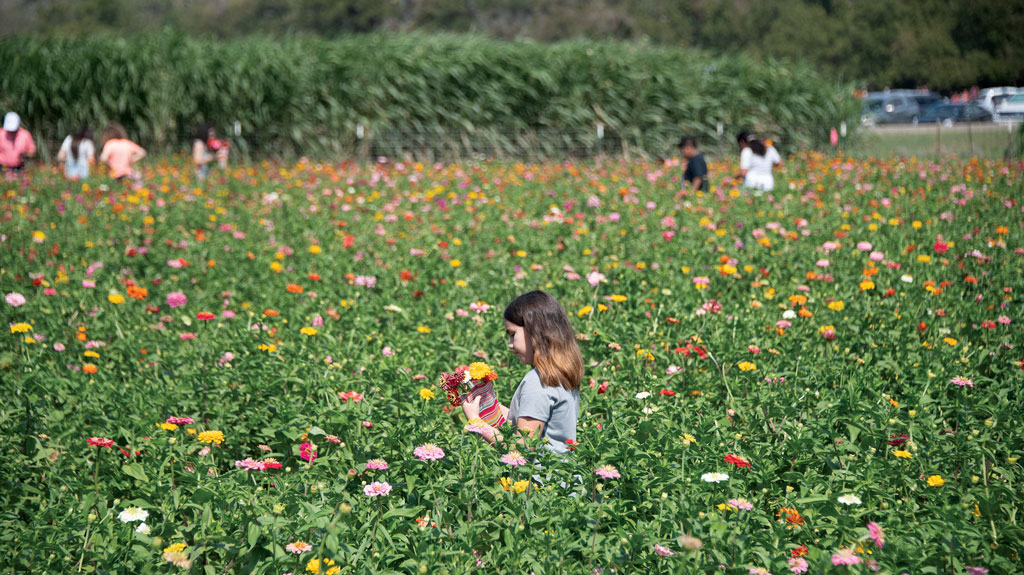
If you want a productive pumpkin patch this fall, the weekend after July 4 is the perfect time to plant.
Plant your pumpkins for Halloween this July 4 weekend. (Well, the Monday after will be fine, too.) Pinch back chrysanthemums, Mexican marigold mint, marigold, autumn asters, salvias, and other late summer, fall-blooming annuals and perennials.
[image id="23316" title="Luedecke" linkto="file" ] Bill Luedecke and daughter Martelle offer advice to Highland Lakes gardeners.Vegetables to plant: Okra, eggplant (transplants), peppers (transplants), corn, sweet potato slips, pumpkin, summer and winter squash, warm season greens, Southern peas.
Deep soak trees if you weren't one of the blessed to have received 4 inches of rain in a month. Make sure it’s a slow, long drip.
Prune herbs often to encourage growth so you’ll have more fresh herbs for salads, pastas, sauces, rubs …
Collect seeds from summer (and late spring) blooming plants. Clean off the chaff and let them dry. Store them in paper or glass — jars, brown lunch sacks, envelopes — but NEVER plastic bags. Make sure to label what type of seed it is. We know it sounds silly, but next spring, when it’s time to plant, the seed might not look as familiar as it does now. Hopefully, you’ll have bunches.
FALL GARDENING
It’s almost too hot to think of fall gardening, but let’s think cool thoughts because now is the time to prepare. Begin by removing all the plants that are no longer producing. A general cleanup is necessary for our gardens.
All the same principles used in planting spring gardens apply to fall gardening. The soil needs be replenished from producing all spring and summer. We need to rebuild our soil by adding healthy microbes and nutrients back into it. A top dressing of organic compost plus soil conditioners and molasses (either in crystal or liquid form) should be applied. Then, let the soil rest awhile.
Remember: We reap what we sow — Galatians 6:7
PLANNING AHEAD FOR SPRING
Consider digging and dividing any crowded spring bulbs. Once bulbs have matured and the foliage has turned brown, it is time to dig them up and thin out the bunch. Crowded bulbs produce fewer and smaller blooms; they usually need thinning every three to four years. Immediately replant them in prepared beds.
This is a great time and opportunity to go to Grandmother’s house and help her. Bring home the bulbs that needed to be thinned and have your own bulbs that you grew up knowing. This is a way to save some of the older varieties of bulbs with the whole family playing in the soil together and keeping a living family history alive. So be good to Grandmother, good to yourself, and good to your children while passing along family history and gardening tips.
DEFINITIONS
Side dressing — To fertilize (growing plants) by mixing fertilizer into the soil along each row, around, and beside the growing plant.
Top dressing — To place on top without mixing into the soil.
GENTLE REMINDERS
Water for birds not only helps our fine feathered friends but keeps the bugs at bay. Jot down in your garden journal bloom times, arrival of birds, and expired blooms. Also, turn your compost. Keep your souls and soles in your garden!
Remember the True Master Gardener: Jesus said, “I am the vine; my Father is the Gardener.” John 15:1
Contact Bill Luedecke at The Luedecke Group Realtors at (512) 577-1463 or email him bill@texasland.net. Contact Martelle Luedecke at (512) 769-3179 or luedeckephotography@gmail.com.












